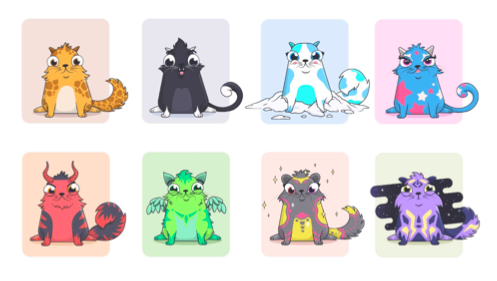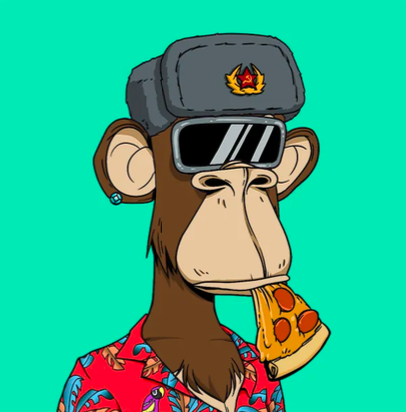NFTs Explained
Still confused about the market’s latest buzzword? We break down what NFTs are all about, and how to go about acquiring your first non-fungible token.
By Xische Editorial, September 8, 2022
The State of the Market
You couldn’t miss the cryptocurrency market downturn over the past several months. Along with the global economy, the cryptocurrency market has lost historic amounts of capital. Bitcoin, the world’s leading crypto, is down nearly 70 percent from its peak price last year. Trading volume on OpenSea, the largest NFT marketplace, is down nearly 99% from its peak. The downturn has forced many companies to go bust and changed how people understand this new form of money and value. What do these events mean for the NFT market?
What is an NFT?
An NFT, or non-fungible token, is a unique digital item traded on a blockchain. A simple definition is that “an NFT is a digital asset that represents real-world objects like art, music, in-game items, and videos. They are bought and sold online, frequently with cryptocurrency, and they are generally encoded with the same underlying software as many cryptos.” But that is just the start of possibility in the NFT universe. The pace of innovation in NFTs is outpacing our ability to keep track of all the new developments and applications but the following is a snapshot of the basics.
NFT vs. Cryptocurrency
Before we dive deeper it’s critical to note the differences between an NFT and a traditional cryptocurrency token. Unlike a token, an NFT cannot be exchanged for another replica of its exact value or form. Thus, they are non-fungible and this is one reason why they can be used as collectibles for a wide range of utilities.
Forbes explains that “physical money and cryptocurrencies are “fungible,” meaning they can be traded or exchanged for one another. They’re also equal in value—one dollar is always worth another dollar; one Bitcoin is always equal to another Bitcoin. Crypto’s fungibility makes it a trusted means of conducting transactions on the blockchain.” NFTs are unique but can still be traded for units of monetary value.
Why Do They Matter?
Many artists, filmmakers, musicians, and other creatives have welcomed the NFT boom because it makes their life much easier. Instead of using middlemen, artists can sell their work directly and keep the lion’s share of the profit. When it comes to image- based NFTs, why can't someone just save a screenshot of the image in question? Where is the innovation?
The innovation is in ownership.You can save a screenshot of an image but you don’t own it. Just like taking a photo of the Mona Lisa while visiting the Louvre. With NFTs, ownership is secured by blockchain technology, which serves as a ledger that keeps track of and verifies ownership of these assets.
Core traits of an NFT
1. Uniqueness & rarity2. Proof of ownership
3. Immutability
4. Programmability
What Drives NFT Value?
Ownership History Or Celebrity Influence The value of the NFT increases if it’s owned by someone that has more credibility in the market, enterprises or people with substantial brand value. Example: Crypto Punk/BAYC
Rarity NFT items are ranked by scarcity. The rare digital assets may be artworks by recognized illustrators or tokens minted by the top celebrities. Example: Murkami (Clonex/Murukami)
Tangibility Some NFTs represent real-world objects, which increases its value in terms of tangibility, which further increases by ownership immutability. Example: Adidas/GAP
Interoperability Interoperability is the ability to use a token in different applications. It’s a key factor in the NFT value because it has increased the use cases of tokens. Example: Sandbox/Axie
How Do I Buy an NFT?
NFTs are bought and sold using cryptocurrency, so you will need to create an account on a popular exchange such as Binance and buy some crypto. Many NFTs operate on the Ethereum blockchain, which means that buyers need the Ethereum cryptocurrency to purchase them. However, more and more are using the faster Solana blockchain as a host. Solana has its own token that will be required for Solana traded NFTs.
Why is an NFT valuable?
It depends on who you ask. For some collectors, the value of an NFT rests on its rarity. For other tech-forward entrepreneurs, the utility of NFTs offers bond options in the future. Think about VIP merchandise or the ability to unlock exclusive access to events with NFTs. NFTs already secure exclusive Discords and soon there will be web3 versions of platforms like Netflix. Some current examples of NFT utilities include Party Horses for access NFTs, Woodies for social impact NFTs, and Immutable for Game NFTs.Once a prospective buyer has purchased some crypto on an exchange, they need to transfer those assets to a crypto wallet that acts like a digital checking account. The most popular wallets for NFTs are Metamask, Ledger, Trezor, Phantom, and Trust Wallet. These can be tricky as some require hardware like secure USB hard drives and some are web-based. Wired has a great guide for understanding and choosing a wallet. Once a wallet is set up, it’s time to connect it to an NFT marketplace and start buying.
Marketplaces are where NFTs are minted, bought, and sold. The largest NFT marketplace by volume is OpenSea but there are several marketplaces where you can trade specific NFT utilities like games. Rarible, NBA Top Shot, Axie Infinity Market, and Mintable are just a few of the leading marketplaces.
Are There Different Kinds of Tokens?
Part of the appeal of NFTs is the nearly countless forms they can take. There are, however, seven leading types of NFTs. These include artwork, photography, collectibles, generative art, music, and games. Most are self-explanatory but games require a bit more context.
Gamified NFTs or Play-to-Earn/Play-and-Earn games, take traditional gaming elements like point scoring and competition and enhance them with blockchain technology. In most current applications, users can trade and swap game assets for financial rewards. The assets are programmed by NFTs, which can be traded and exchanged. This sector is still evolving and most analysts forecast major innovation taking shape in gamified NFTs.
As part of the crypto boom last year, investors flocked to NFTs as another store of value. You could buy a unique image and hold it as a store of value similar to a piece of artwork. The NFT market has cooled dramatically with the general downturn in markets. According to the CryptoSlam NFT tracker, NFT sales since April have dropped by 150 percent. While the technology powering NFTs and blockchains is revolutionary, the fact is that NFTs have become asset classes just like stocks. They go up and down according to prevailing market conditions. They might be down now, but they will undoubtedly spike back up during the next rally.
Core traits of an NFT
1. Uniqueness & rarity2. Proof of ownership
3. Immutability
4. Programmability
Are There Different Kinds of Tokens?
Part of the appeal of NFTs is the nearly countless forms they can take. There are, however, seven leading types of NFTs. These include artwork, photography, collectibles, generative art, music, and games. Most are self-explanatory but games require a bit more context.
Gamified NFTs or Play-to-Earn/Play-and-Earn games, take traditional gaming elements like point scoring and competition and enhance them with blockchain technology. In most current applications, users can trade and swap game assets for financial rewards. The assets are programmed by NFTs, which can be traded and exchanged. This sector is still evolving and most analysts forecast major innovation taking shape in gamified NFTs.
As part of the crypto boom last year, investors flocked to NFTs as another store of value. You could buy a unique image and hold it as a store of value similar to a piece of artwork. The NFT market has cooled dramatically with the general downturn in markets. According to the CryptoSlam NFT tracker, NFT sales since April have dropped by 150 percent. While the technology powering NFTs and blockchains is revolutionary, the fact is that NFTs have become asset classes just like stocks. They go up and down according to prevailing market conditions. They might be down now, but they will undoubtedly spike back up during the next rally.
How do NTFs and the Metaverse Connect?
A Metaverse needs digital assets, and NFTs are perfectly positioned for representing any type of digital assets.
Provenance E-commerce will be huge in the metaverse and users will need provenance to see whether or not the product is authentic.
Virtual Real Estate Virtual real estate is a big factor in the metaverse, these are almost always represented with NFTs.
Ticketing NFT can replace virtual tickets, so a single ticket only has a single owner.
Digital Identity NFTs can help users store information or items within the blockchain ledger. No other third party can access this from an external source.
Where is This Going?
Perhaps the greatest promise of NFTs is that individuals, businesses, and governments can leverage the technology for their own purposes. As an individual, you can mint your artwork or music as an NFT. Businesses can use NFT utility to offer exclusive access to products or services. Governments can also offer special access to products and community spaces with NFT technology. The sky is the limit and that’s exactly why so many people are excited about this sector.















